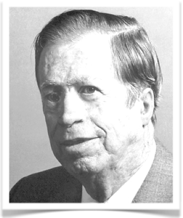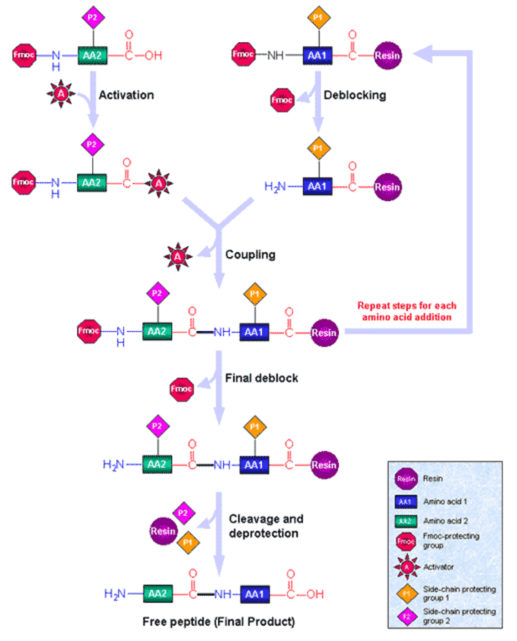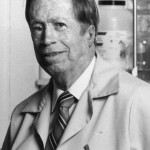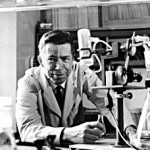Robert Bruce Merrifield, (1921-) is an American biochemist who won the 1984 Nobel Prize in chemistry for his method of producing peptides and proteins. He revolutionized the study of these complex materials by developing an automated laboratory technique for rapidly synthesizing peptide chains in large quantities, thus greatly advancing the fields of biochemistry, molecular biology, and pharmacology.
-
Education and Experiences
1949 PhD Biochemistry, University of California at Los Angeles
1984 John D. Rockefeller Jr Professor, Rockefeller University
-
Awards and Honors
1969 Lasker Award for Basic Medical Research
1970 Gairdner Award
1972 American Chemical Society Award for Creative Work in Synthetic Organic Chemistry
1973 Nichols Medal
1979 2nd Alan E. Pierce Award of the American Peptide Symposium
1984 Nobel Prize in Chemistry
1990 Ralph F. Hirschmann Award in Peptide Chemistry from the American Chemical Society
1990 Josef Rudinger Award
1993 Seaborg Medal
-
Research
Concept and early development of solid-phase peptide synthesis
Dr. Merrifield first came up with the idea for solid-phase peptide synthesis in 1959 and spent the next four years perfecting it. In his process, an insoluble, porous resin in the form of tiny spheres is fixed with “linkers” to which peptide chains can be attached. The linker forms a covalent bond with the first amino acid, rendering the peptide immobile until released from the polymer by a special reagent like trifluoroacetic acid. This anchoring step ensures that none of the peptide is lost in the purification step that follows the addition of each amino acid. A further innovation of Dr. Merrifield’s technique was the use of an excess of amino acids and reagents, which ensured complete bonding and significantly sped up the process. (Excerpt from The Rockefeller University)
The unique uses of solid-phase synthesis has been the synthesis of peptide libraries. Most of the work on this new field in which thousands or millions of peptides are prepared simultaneously has been by solid-phase methods. This new technique is proving to be of great practical importance in rapid drug discovery of peptide, peptide mimetic, and nonpeptide compounds. Developments in screening methods now allow the examination of large numbers of compounds, and active products with structures unpredictable from natural product sequences are being found in this way.
(adapted from Sigma-Aldrich)
-
References
[1] R. B. Merrifield, J. Am. Chem. Soc. 1963, 85, 2149. DOI:10.1021/ja00897a025
-
Related Links
Robert Bruce Merrifield - Wikipedia
-
Photo Gallery
-
Related Books
[amazonjs asin=”0199637245″ locale=”US” title=”Fmoc Solid Phase Peptide Synthesis: A Practical Approach”][amazonjs asin=”0199257388″ locale=”US” title=”Amino Acid and Peptide Synthesis (Oxford Chemistry Primers, 7)”][amazonjs asin=”1627035435″ locale=”US” title=”Peptide Synthesis and Applications (Methods in Molecular Biology)”]







